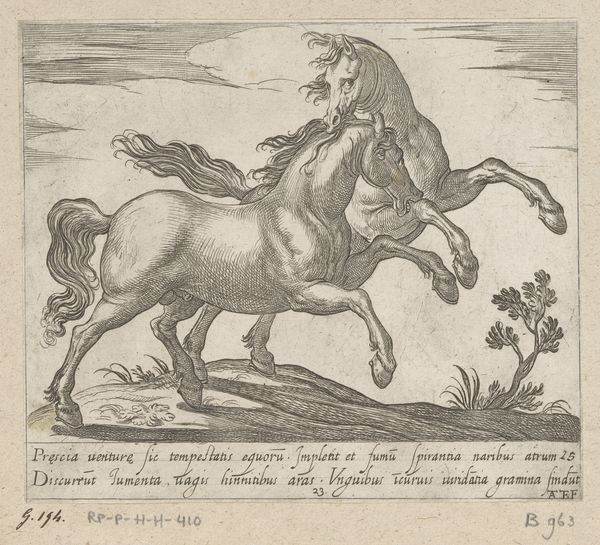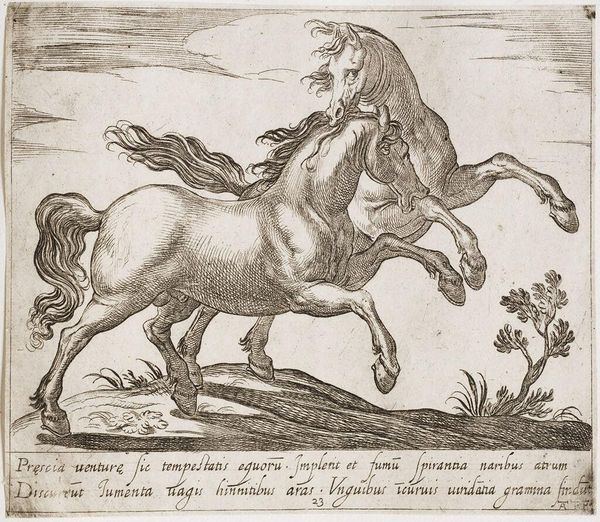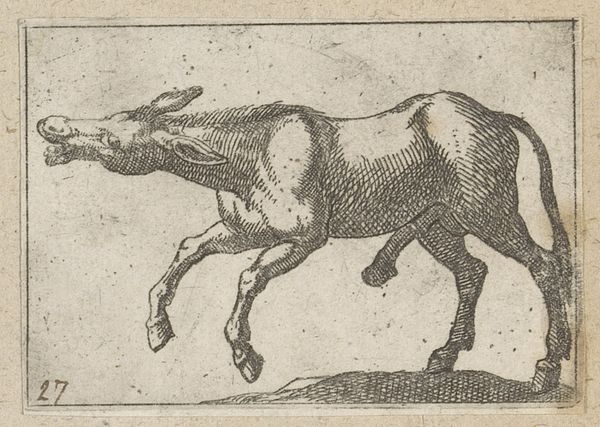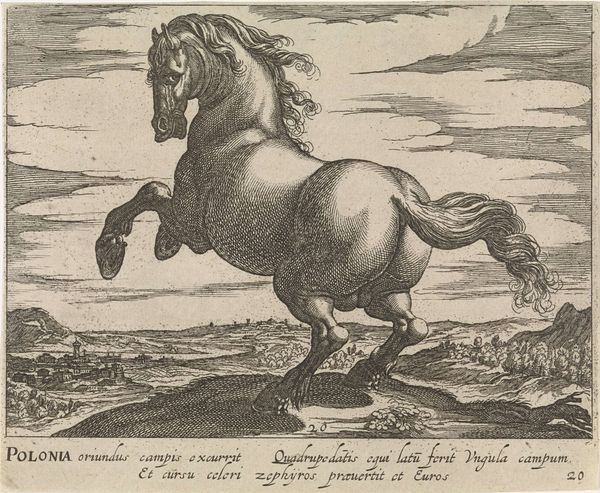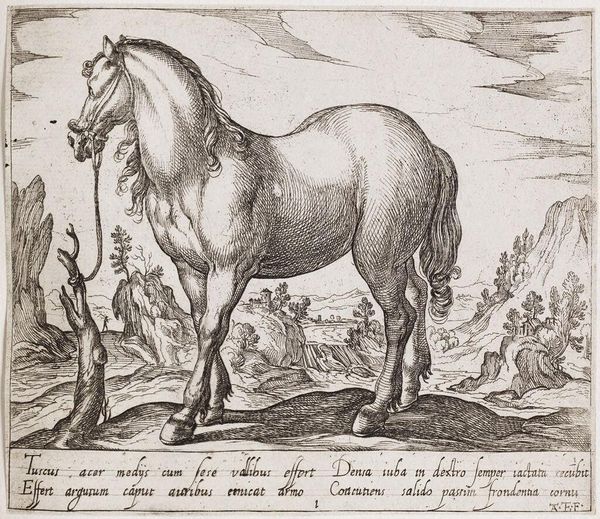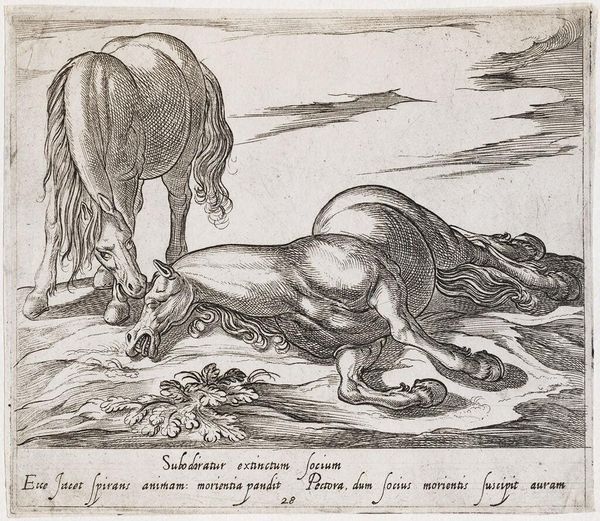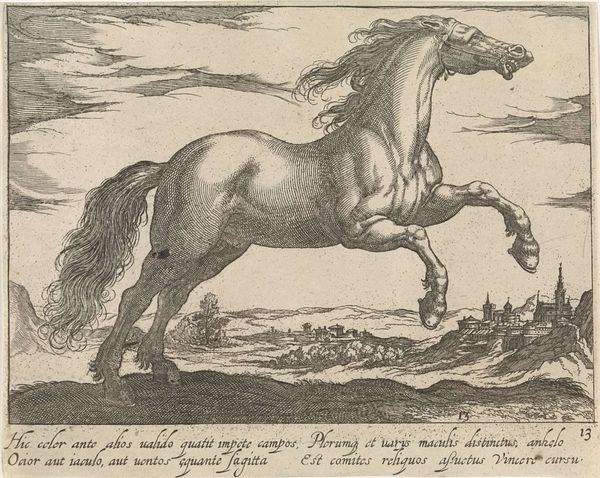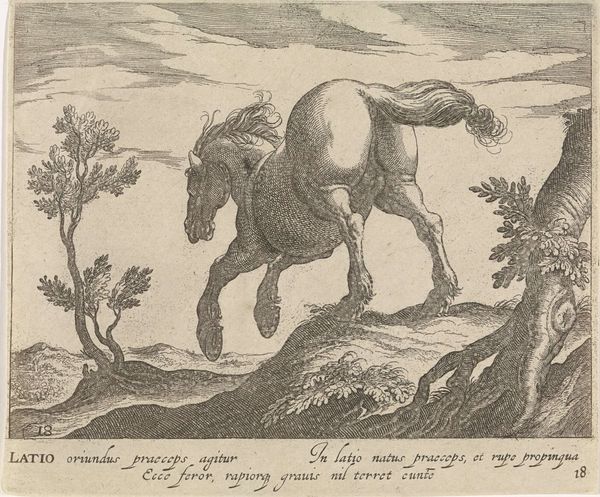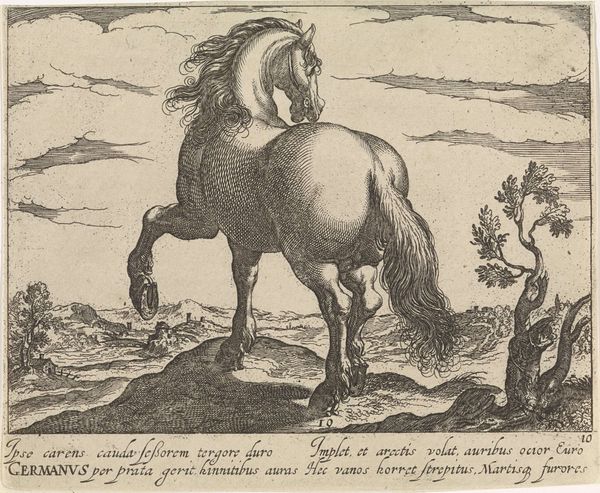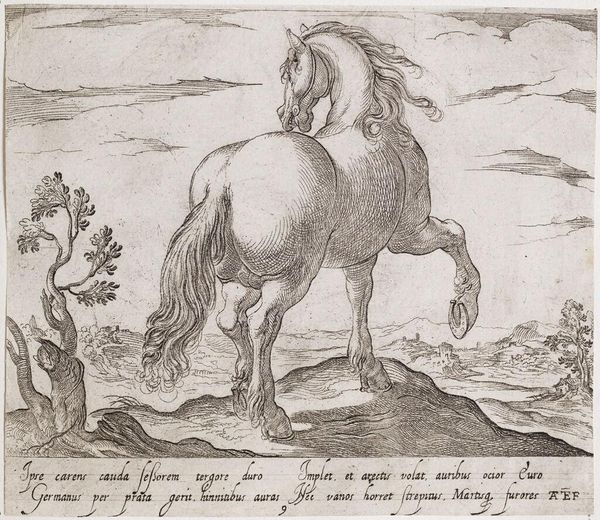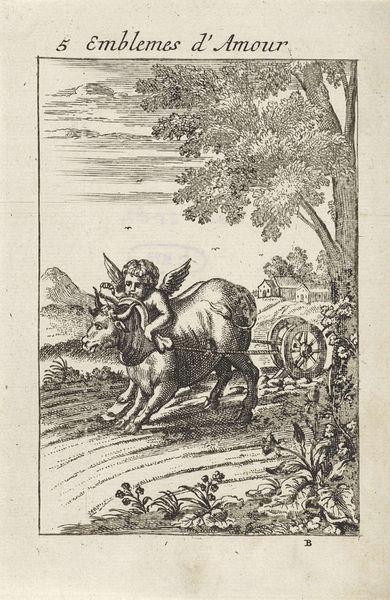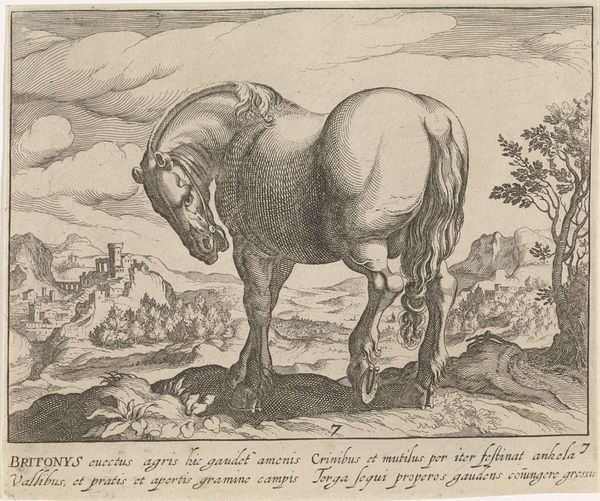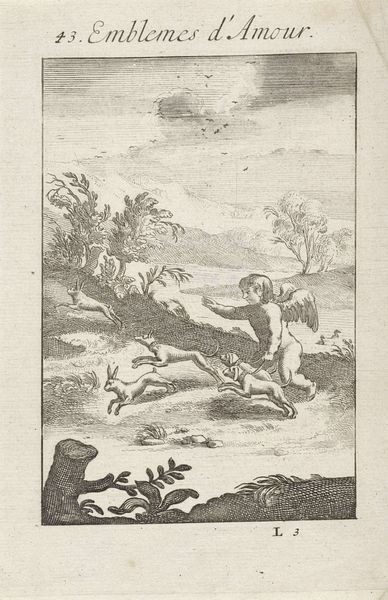
print, etching, engraving
#
narrative-art
#
baroque
# print
#
etching
#
landscape
#
engraving
Dimensions: height 84 mm, width 65 mm
Copyright: Rijks Museum: Open Domain
Curator: Welcome. We are standing before Albert Flamen's 1672 engraving, "Dode ezel," or "Dead Donkey". Editor: It strikes me as remarkably bleak, a feeling only deepened by the starkness of the etching itself. The landscape, though idyllic in elements, seems heavy with a strange desolation. Curator: The desolation is precisely what captures our attention. The donkey, fallen, is the immediate focal point, but the surrounding countryside— the church spire, the distant house—are equally telling. What does the animal symbolize do you think? Editor: The text at the top, "Post funera bellat", and beneath the image in French “Il combat après sa mort" indicates it fights after death; This combined with the recumbent donkey gives off a very ominous feeling. We also see through lines that this would be quite a laborious undertaking to create. Each line adding detail, dimension and tone. Curator: The act of physically crafting the etching emphasizes labor and skill but think more about symbolic messaging - The text alludes to resilience and a struggle that continues beyond demise and references death in very strong language. Think about the enduring impact of an action or belief system that may extend past an individual's lifetime. The animal itself becomes secondary. The message is in the Latin, after all. Editor: But there's the brute reality of the image too; It depicts very effectively and vividly a simple dead animal lying in a field. What if Flamen simply and directly wanted us to face the very crude materiality of death, the base and animalistic experience of passing? The landscape is almost an indifferent witness. Curator: True but landscape traditionally does lend an allegorical layer in baroque period work, as does the script. Consider light and shadow, then - The sun breaks through, even in this somber scene, promising— or perhaps mockingly promising— renewal even with a foreground that denies it Editor: I am also struck by the social aspects embedded. Here the labor is for an elite art consumer and patron. How do you see the context in light of consumerism or other issues, as it’s clearly destined for wealthy households and collectors' cabinets, who probably aren't thinking about mortality. Curator: An interesting question. Perhaps by contemplating their own legacies and actions through the filter of symbolic rendering of morality. Thank you. Editor: Thanks to you too!
Comments
No comments
Be the first to comment and join the conversation on the ultimate creative platform.
